These Smothered Turkey Necks are juicy, tender, and seasoned to perfection after being cooked low and slow in a Cajun gravy thatll have you licking the plate.
Most people only use turkey necks for soup or gravy for Thanksgiving dinner or discard it entirely.
Ive been eating turkey necks since I was knee-high to a frog. They are a big part of New Orleans food culture; they are served for Sunday dinner, at Crawfish boils, and at mom-and-pop restaurants. My grandfather used turkey neck meat in his dirty rice to add another layer of flavor.
I have no idea why its taken me this long to share this recipe, but here we are. I like to make turkey necks with an Etouffee approach; browned turkey necks in brown gravy equals a flavor party.
There are two things that Ill tell you about cooking smothered turkey necks. First, you must decide between a thin gravy with just the jus or a thick gravy made from a roux (my favorite). Second, is picking a cooking method; are you going with a slow cooker/crock pot, pressure cooker (instant pot), or bake them in the oven?
Once you figure those two out, you can start licking your chops for dinner because it will be good!
Before you start whipping up this smothered turkey neck recipe, look at this list of ingredients to make sure you have everything you need for some fall-off-the-bone turkey necks.
You can find turkey necks with other turkey items at your local grocery store. Every store may not carry them, so call before making a blank trip. Please do not confuse them with smoked turkey necks. Turkey necks come in various sizes, so try to pick similar ones. That can be challenging, so ask your butcher to cut the meatier, larger ones in half.
I love using Savory Cajun Seasoning for this recipe because its low-sodium and flavorful. You can also use my Homemade Creole Seasoning. Its a blend of salt, black pepper, garlic powder, onion powder, cayenne pepper, and more herbs and spices you should already have.
Theres no point in using water and washing away all the flavor, so use a low-sodium chicken stock/broth.
Youll need the Cajun-Creole holy trinity, onion, celery, and bell peppers. I also love the flavor that bay leaves, fresh thyme, and sage add to this recipe.
To make a yummy gravy that these turkey necks can braise in will need flour and oil. My preference is unbleached flour and avocado oil for a healthier gravy.
Turkey necks are an underrated and often overlooked cut of meat. However, when cooked properly they can be incredibly delicious and full of flavor. If you’ve never cooked turkey necks before don’t be intimidated. With this step-by-step guide, you’ll learn everything you need to know to cook moist, tender turkey necks at home.
Why Cook Turkey Necks?
There are several great reasons to cook turkey necks:
-
They are inexpensive and widely available. Turkey necks can often be found for a fraction of the cost of other turkey cuts.
-
The meat is flavorful and rich. Turkey necks have a deeper, gamier taste compared to breast meat. The meat also pulls cleanly off the bone when cooked correctly.
-
You get more meat than you might think. While turkey necks look small, there is a good amount of edible meat on them if you cook them properly to soften the connective tissue.
-
The bones and cartilage add flavor. Turkey necks contain bones, cartilage, and collagen that break down and impart flavor and gelatin to sauces, soups, and braised dishes.
-
Minimal prep is required. Turkey necks just need a quick rinse before cooking. There’s no tedious trimming or slicing required.
Picking the Right Necks
When buying turkey necks look for ones that are fresh not frozen. Check the sell-by date and pick necks that are within a few days of this date. The necks should have a fresh, raw turkey smell with no unpleasant odors. Avoid necks with dry, cracked, or split skin. Depending on the recipe, you can leave the skin on or remove it.
Prepping Turkey Necks
Prepping turkey necks is very straightforward:
-
Rinse the necks under cool running water. Pat them dry thoroughly with paper towels.
-
Use a knife to remove any feathers still attached.
-
Trim off any loose skin or large chunks of fat, if desired. The skin and fat can be left on for added moisture and flavor.
That’s all the prep that’s required before cooking your turkey necks!
How to Cook Turkey Necks
There are several excellent methods for cooking moist, flavorful turkey necks:
Braising
Braising is one of the most popular cooking methods for turkey necks. It involves browning the necks first to develop flavor, then slowly cooking them in a flavorful liquid like broth, wine, or barbecue sauce.
To braise turkey necks:
-
Pat the necks dry and season all over with salt and pepper.
-
Heat oil in a large skillet or Dutch oven over medium-high heat. Brown the necks well on both sides.
-
Add your choice of braising liquid, like chicken broth, beef broth, or apple cider. Bring to a boil.
-
Reduce heat to low, cover, and simmer gently until the meat is very tender and falling off the bone, 60-90 minutes.
-
Use the braising liquid as a sauce or gravy for the necks.
Stewing
Stewing turkey necks involves simmering them in water or broth until ultra tender. It’s one of the easiest hands-off methods.
-
Place necks in a large pot and add enough water or broth to cover by 1-2 inches.
-
Add seasonings like salt, pepper, bay leaves, onions, and garlic.
-
Bring to a boil then reduce heat and simmer, covered, for 1.5-2 hours until meat is fall-off-the-bone tender.
-
Skim fat and use broth as a base for soups, gravy, or sauce.
Smoking
Smoking brings out the deep, rich flavors in turkey necks. Hot smoking at 225-250°F is best.
-
Rinse and pat dry turkey necks. Season lightly with salt and pepper or dry rub.
-
Arrange necks on the smoker racks. Insert a meat probe thermometer into the thickest part of meat, not touching bone.
-
Hot smoke for 2-3 hours until the internal temp reaches 165°F. Spritz with apple juice or broth to help keep moist.
-
Rest necks for 10 minutes before pulling the tender meat off the bones.
Roasting
Roasting turkey necks helps render fat and crisp the skin.
-
Pat necks dry and rub the skin liberally with oil or butter. Season with herbs, salt, and pepper.
-
Place necks on a rack set in a roasting pan. Roast at 400°F for 45-60 minutes until skin is browned and meat is cooked through.
-
Turn halfway through roasting for even cooking. Test doneness by cutting into the meat near the bone.
Grilling
The high dry heat of grilling crisps the skin beautifully. Use indirect heat and monitor closely to avoid burning.
-
Toss necks with oil and seasonings of your choice. Grill over indirect medium heat for 45-60 minutes until cooked through, turning occasionally.
-
Insert a probe thermometer into the meat, avoiding bone, and cook until it reaches 165°F.
-
Move necks over direct heat for 1-2 minutes per side at the end to crisp the skin.
Slow Cooker
For maximum convenience, you can cook turkey necks in a slow cooker.
-
Place seasoned necks into a slow cooker and add 1 cup broth or water.
-
Cook on Low for 7-8 hours until extremely tender.
-
Remove necks and let rest before pulling off the meat.
-
Use the cooking liquid as the base for gravy or soup.
Serving Ideas for Turkey Necks
The flavorful meat that comes off cooked turkey necks is incredibly versatile. Some delicious ways to use it include:
- Over rice, mashed potatoes, or pasta
- In gumbo, jambalaya, or etouffee
- Mixed into soups, stews, or chilis
- In tacos, enchiladas, empanadas, or tamales
- On nachos, in omelets or frittatas
- In sandwiches, wraps, or salads
- Topping pizza, flatbreads, baked potatoes
The possibilities are truly endless! Use your imagination to come up with fun new ways to use the tasty turkey neck meat in recipes.
Safely Reheating and Storing Leftovers
Properly stored, leftover cooked turkey necks will last 3-4 days refrigerated. Reheat gently on the stovetop, in the oven at 325°F, or in the microwave until heated through, pulling apart any pieces of meat still clinging to bones.
For longer term storage, cooked turkey necks can be frozen for 2-3 months. Thaw in the refrigerator before reheating. Be sure to reheat all leftovers to an internal temperature of 165°F.
Enjoy Delicious Turkey Necks
Now that you’re armed with all the key tips for preparing moist, flavorful turkey necks, it’s time to get cooking! With the simple methods above, you can transform inexpensive turkey necks into finger-licking delicious soul food. This underrated cut deserves a place in your cooking rotation.
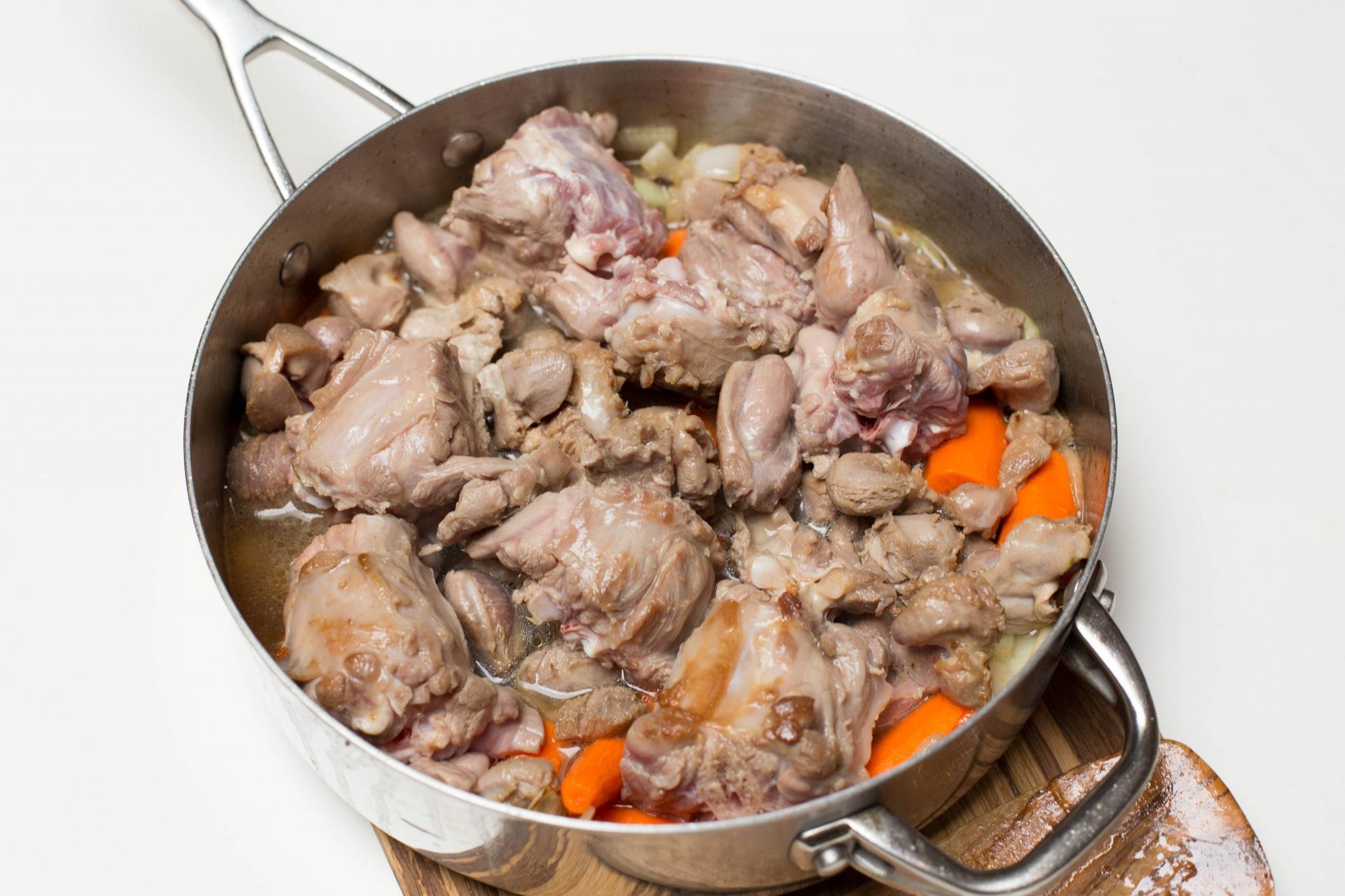
How To Store Smothered Turkey Necks
Leftover turkey necks are best 3 days after cooking, and the flavor will be better the next day. However, theyll be good for 7 days if stored in an airtight container in the fridge.
After cooling turkey necks, place them in an airtight container and in the freezer for 2 months. If you need them immediately, place them in a bowl with cool tap water or thaw them 24 hours before using.
Reheat turkey necks in a pot over medium heat for 10 minutes or until hot.
Make them in advance. Before pouring the gravy over the turkey necks, cool it down first. Wrap it up and pop it in the fridge. The next day, take it out and let it sit at room temperature for 15-20 minutes before baking.
How To Make Smothered Turkey Necks Recipe
Making tender turkey necks requires time to break down the neck bones, so check the pro tips section below to show you the best way to save time.
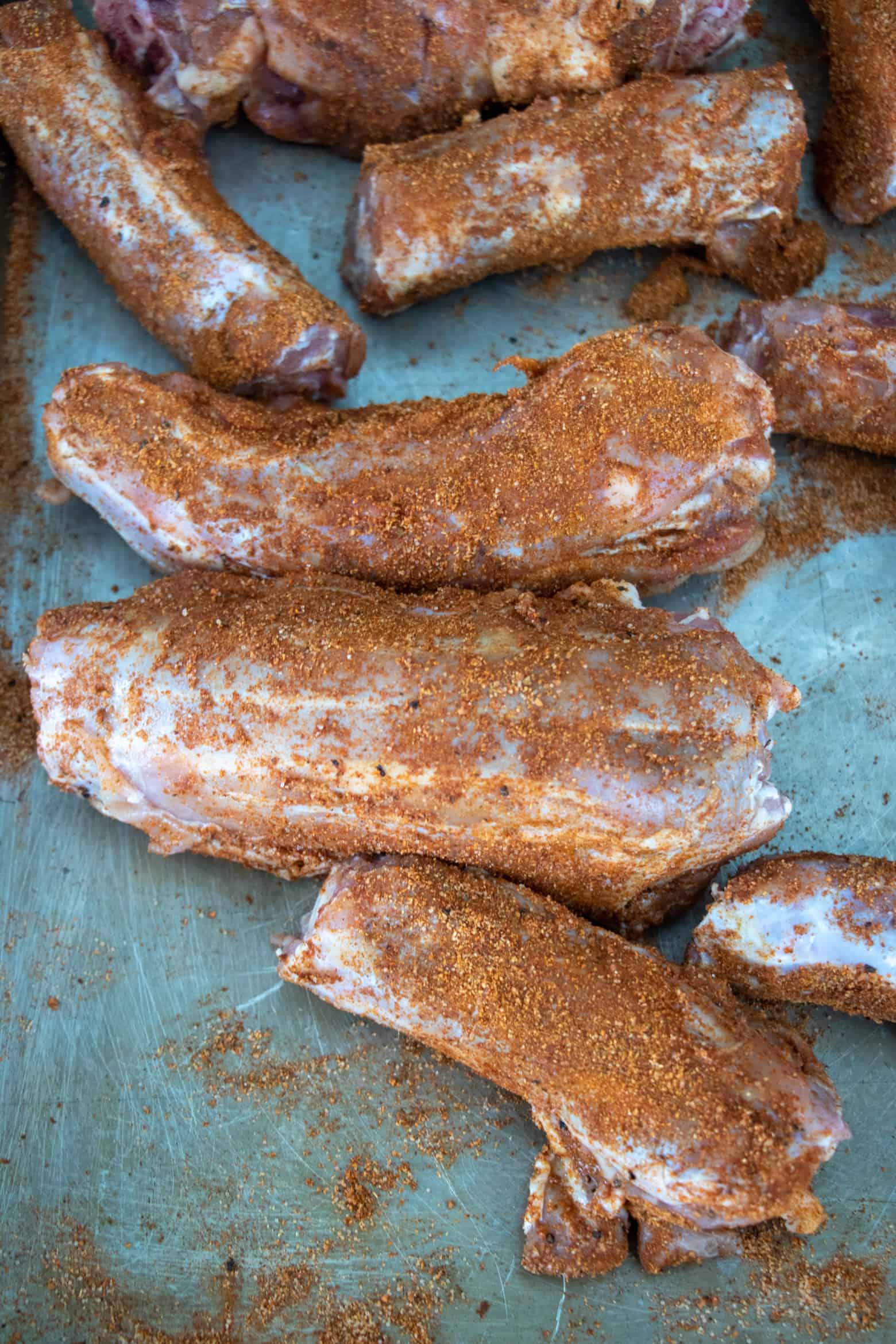
Preheat the oven to 300°F/ 148°C. Liberally season turkey necks on both sides with 4 tablespoons of Savory Cajun seasoning.
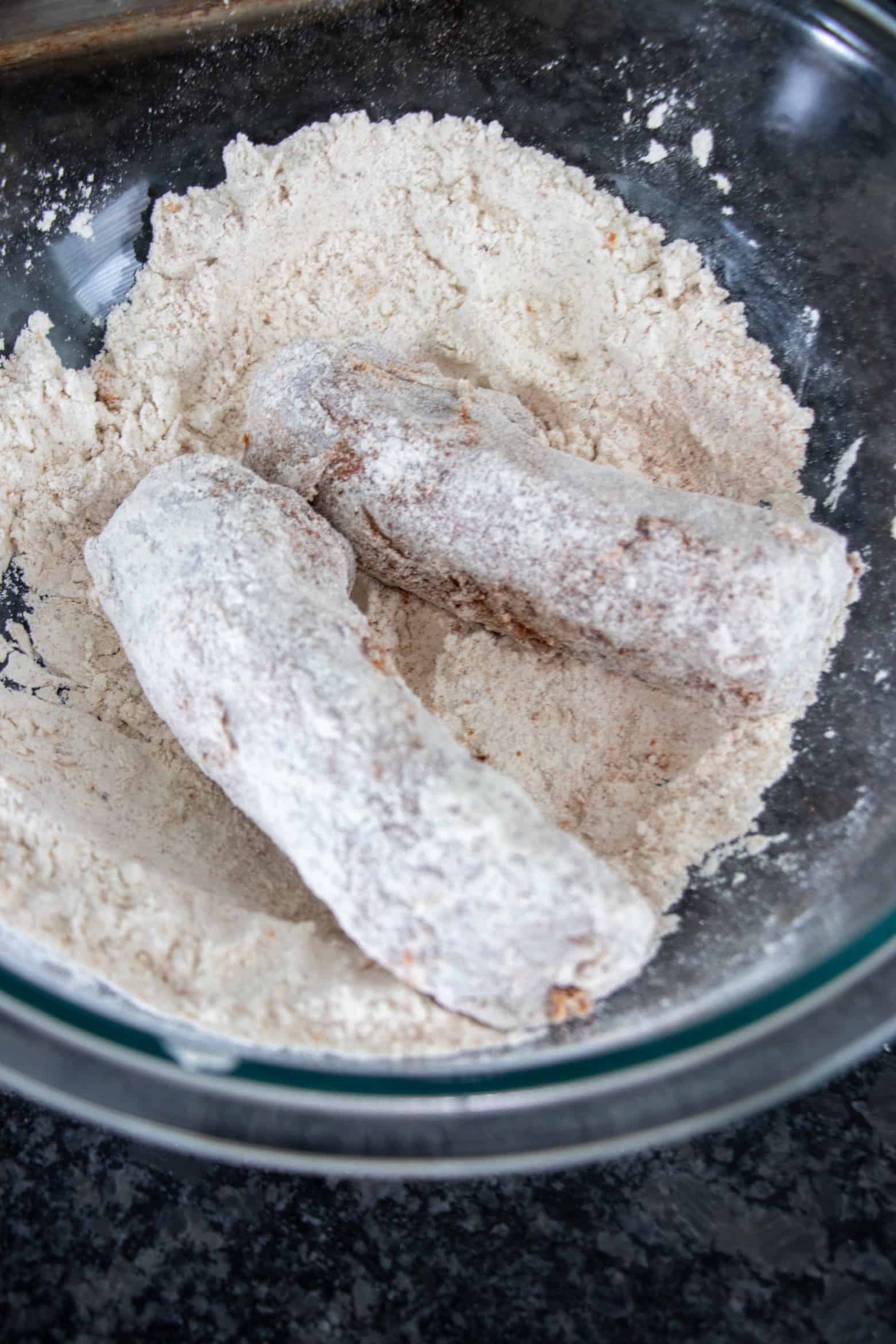
In a medium bowl, combine the remaining Cajun seasoning in flour. Light dredge turkey necks in flour.
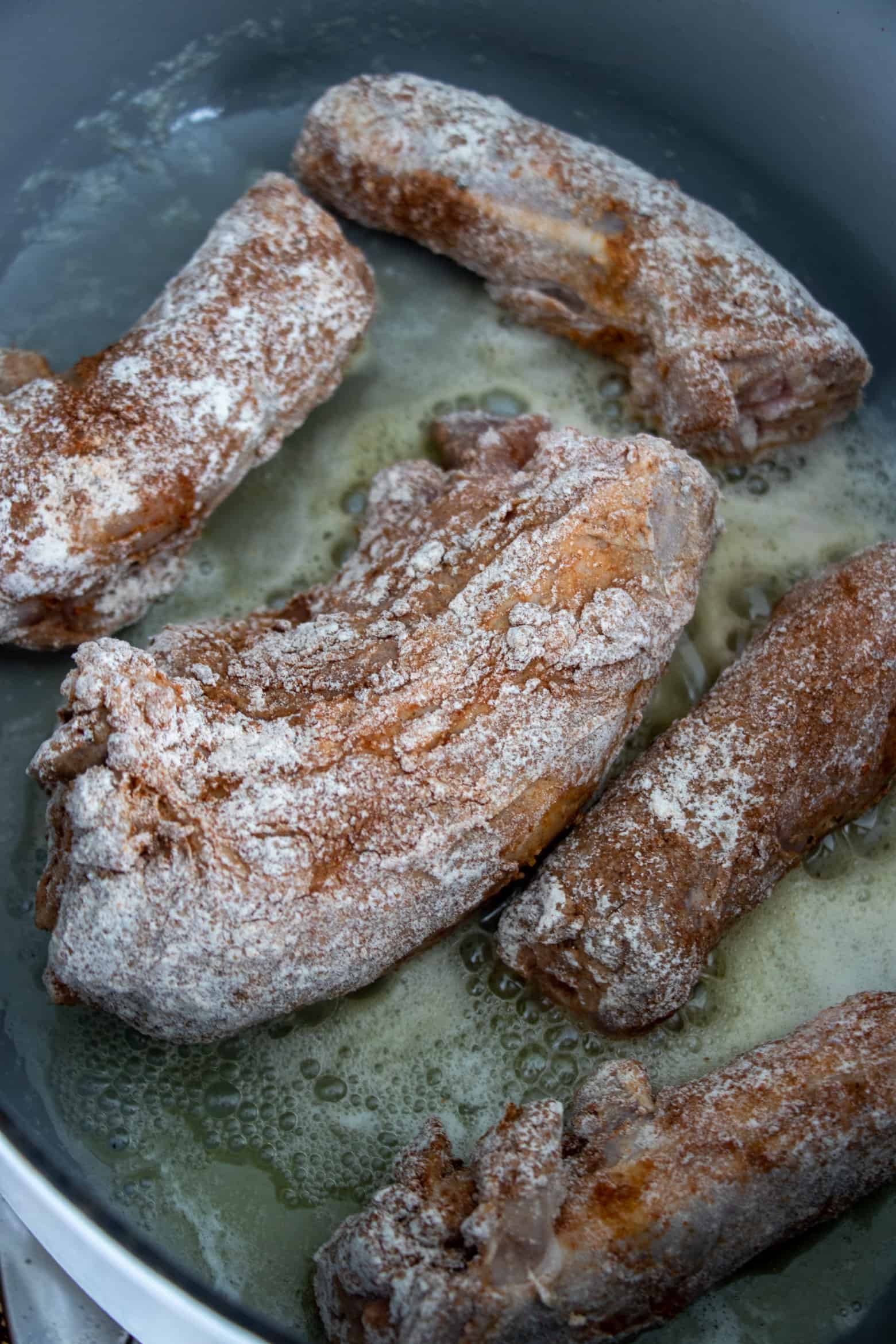
Heat a heavy bottom pot over medium heat, add oil and butter; once butter is melted, in batches, cook turkey necks for 2-3 minutes per side until brown.
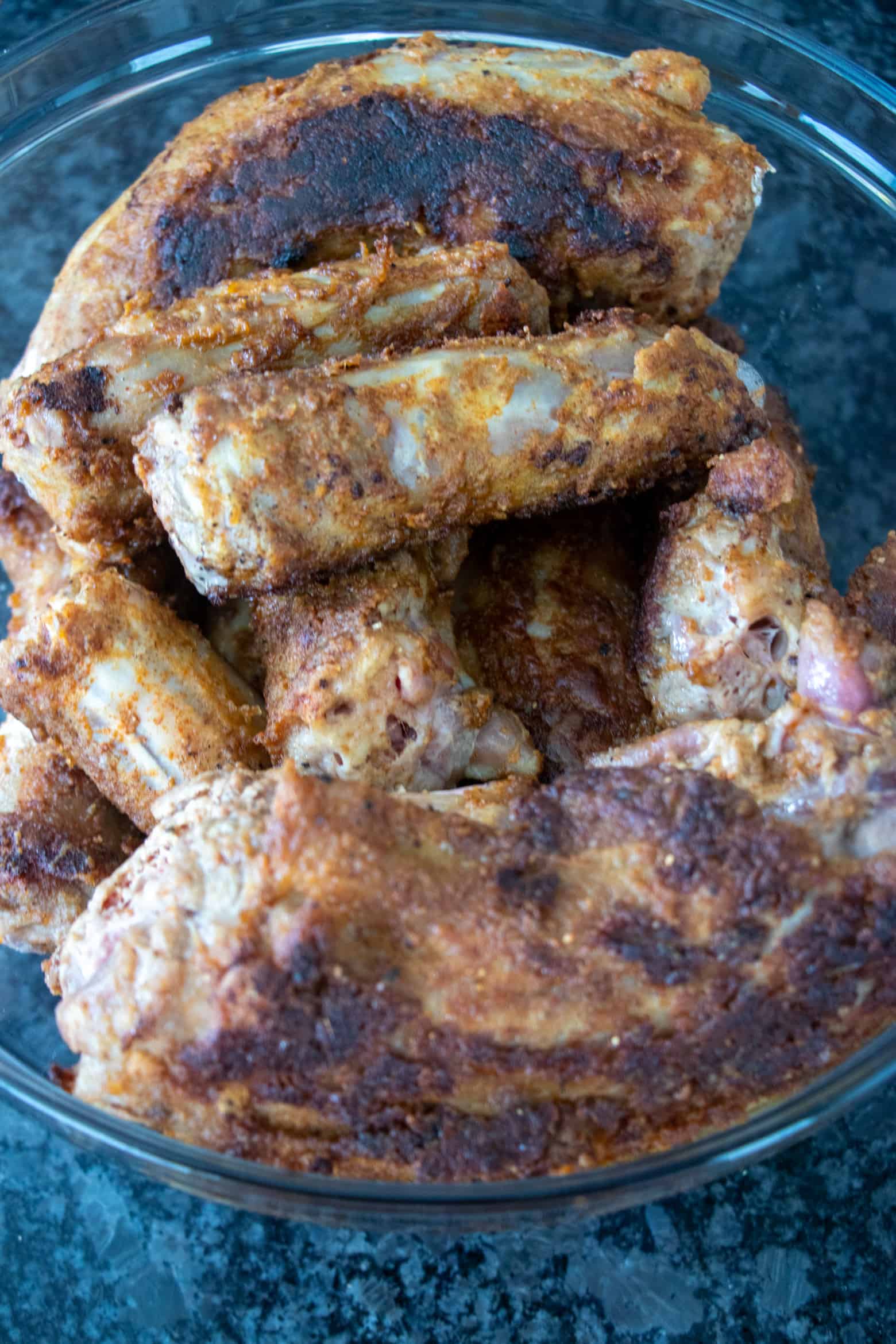
Set aside, and add remaining oil and butter.
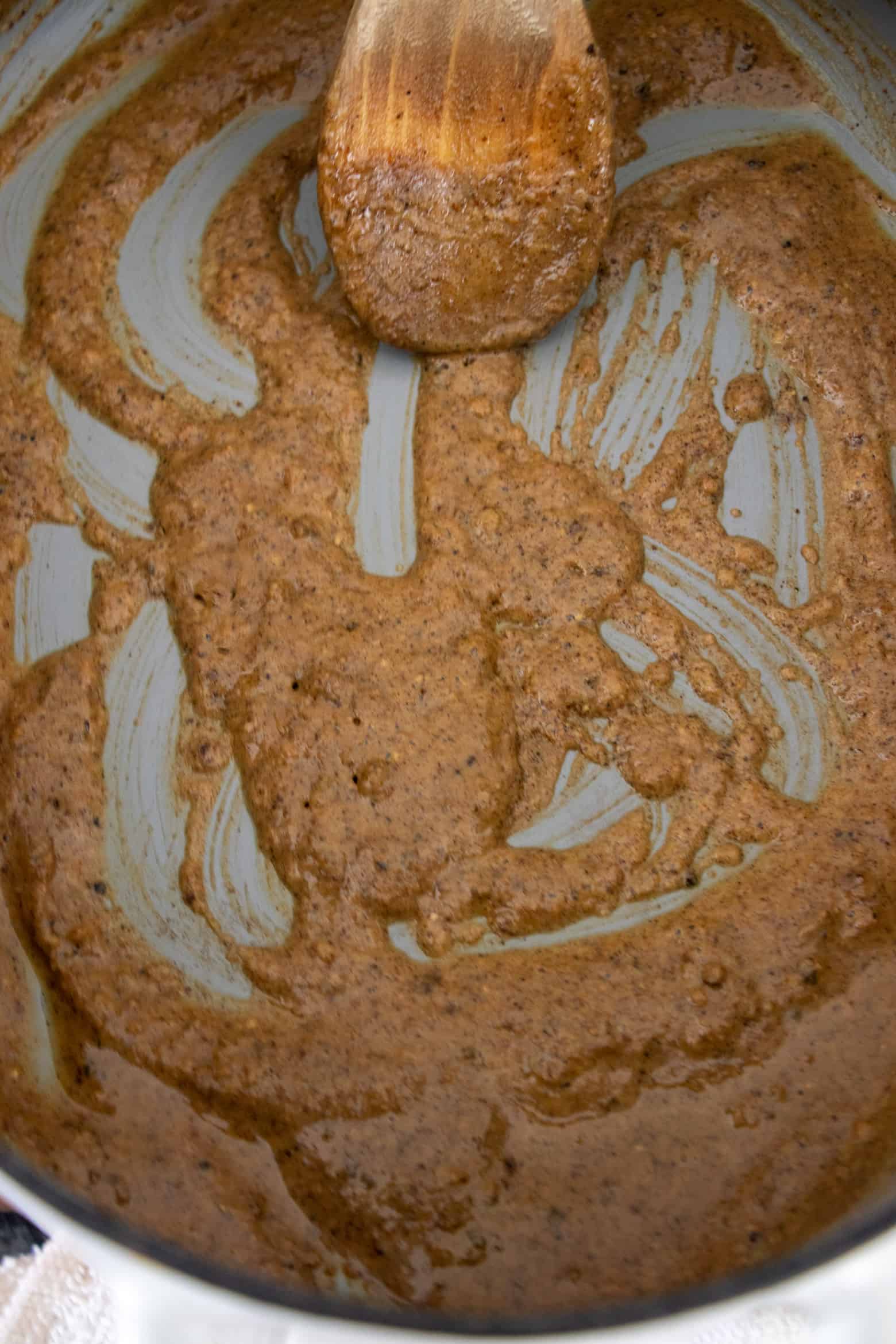
Once melted, add ½ cup of seasoned flour and stir constantly until it turns peanut butter brown.
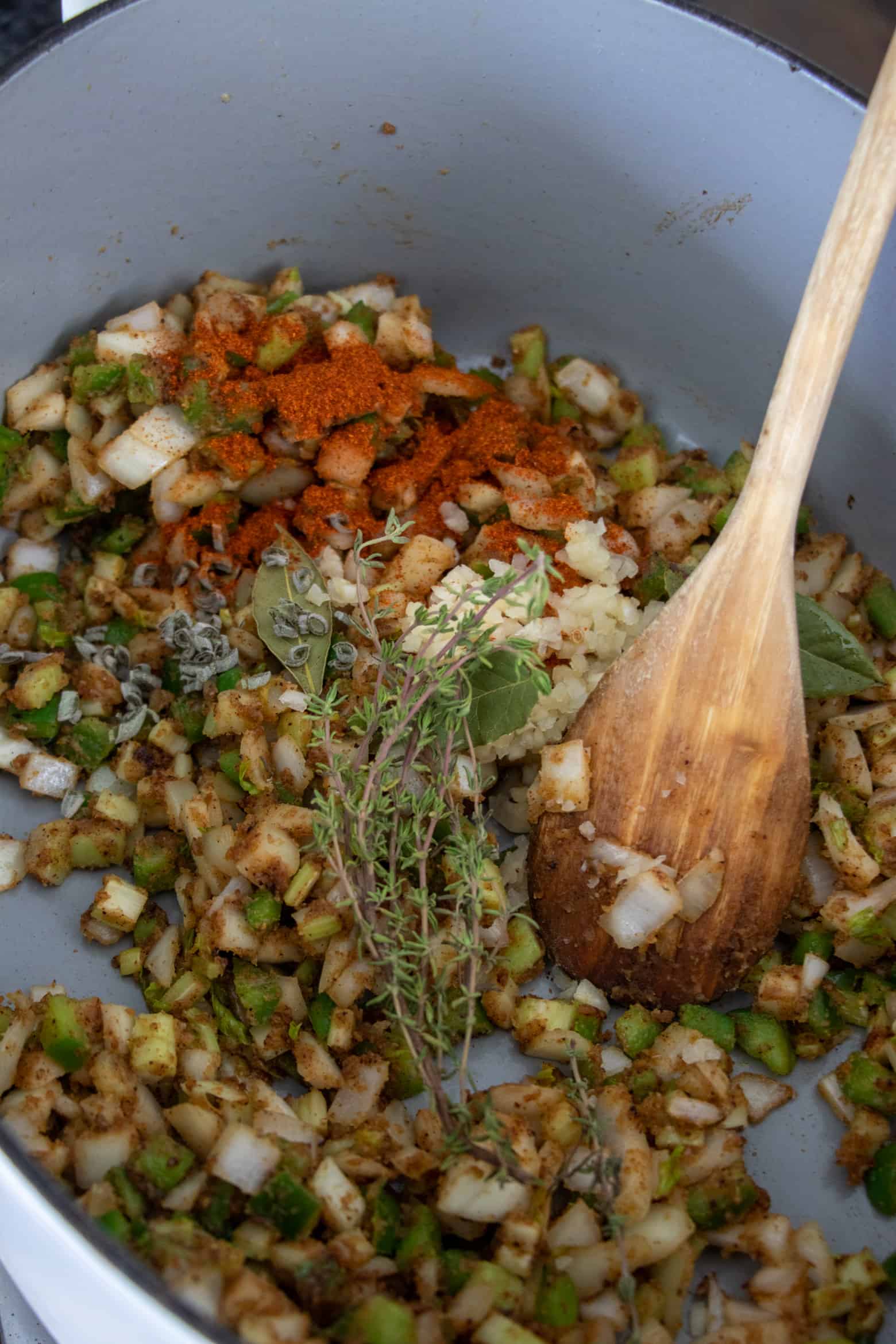
Stir in onions, bell pepper, celery, and kosher salt; cook for 2-3 minutes. Add garlic, thyme, sage, cayenne pepper, and bay leaves, and cook for 1 minute.

Add worcestershire sauce and chicken stock, stir until smooth, and bring to a boil. Add the turkey necks back, cover, and bake for 3-3 ½ hours until turkey necks are fork tender. Stir at the halfway point and lightly scrape the bottom of the pot; add more stock if you want a looser gravy.
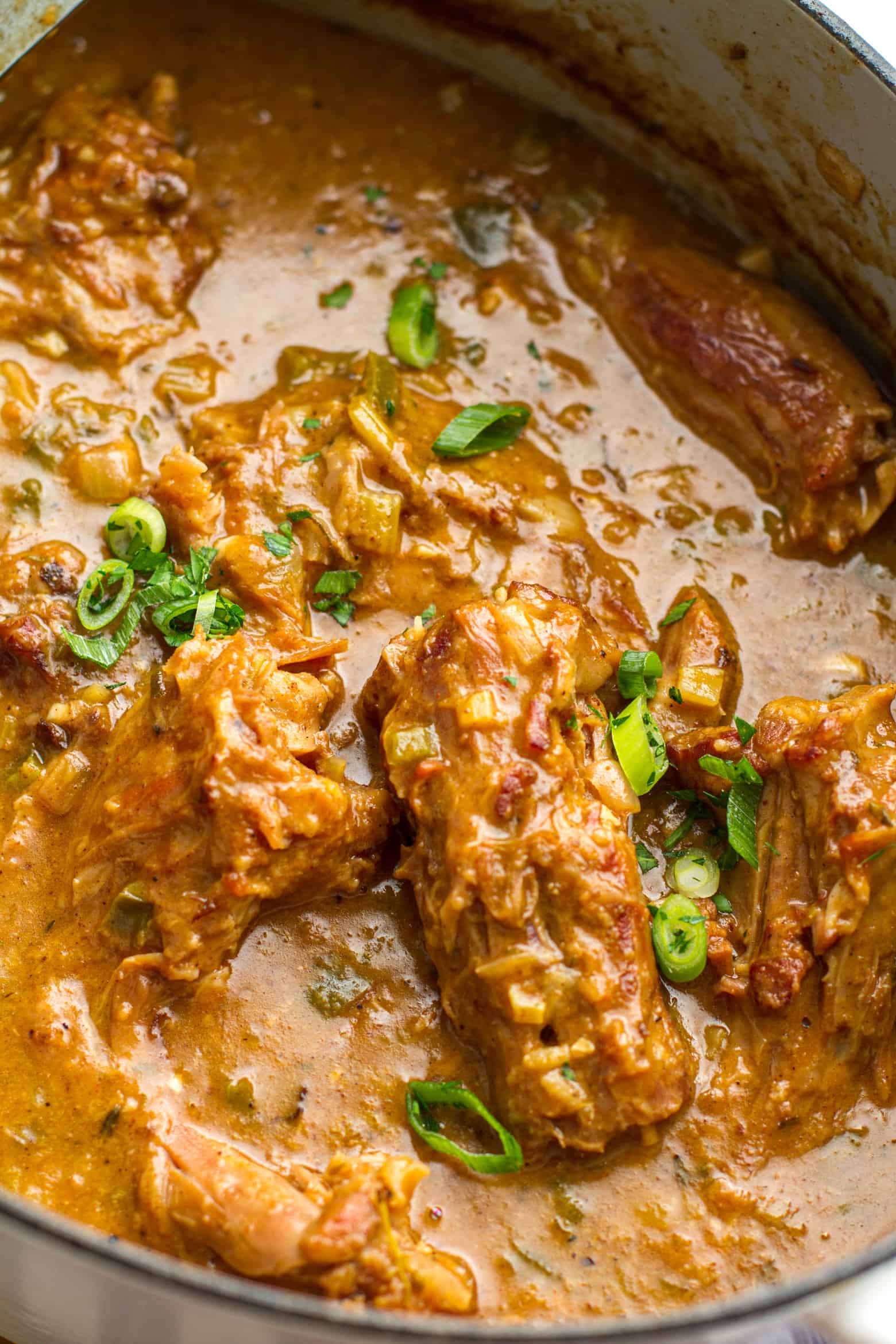
Serve turkey necks with gravy over rice or mashed potatoes and garnish with green onions and parsley.
Super Tender Smothered Turkey Necks | Comfort Food | Chef AldenB
FAQ
What do you do with the neck of the turkey?
Is turkey neck good to eat?
How to stuff turkey neck?
How long do you cook a turkey neck?
Simmer: Add chicken stock or broth and simmer on low heat, covered, for 30 minutes (4). Flip the meat and add the sliced onions (5). Cook for 20 minutes, occasionally stirring, until the onions are soft and the turkey fork tender and cooked through (6). Adjust the taste with salt and pepper. Different ways of cooking turkey necks
What treatment is available for wry neck?
Wry neck or torticollis, is a painfully twisted and tilted neck. Treatments for wry neck include: applying heat massage physical therapy or chiropractic care traction stretching exercises neck braces Your doctor may recommend surgery, such as: fusing abnormal vertebrae lengthening neck muscles cutting nerves or muscles using deep brain stimulation to interrupt nerve signals (used only in the most severe cases of cervical dystonia) Medications can be helpful. They can include: muscle relaxants medications used to treat the tremors of Parkinson’s disease botulinum toxin injections repeated every few months pain medications
How do you cook a browned Turkey Neck?
Remove the browned turkey necks from the oven. Take the turkey necks out of the pot and set aside. Add the roux to the pot and mix well. Cook on the stovetop over medium heat to allow the sauce to thicken. Serve the turkey necks with rice, topped with the brown gravy.
Are turkey necks fully cooked?
By the way, if you purchase them from the grocery store, they are fully cooked. Smoked turkey necks are perfect for adding amazing flavor to collard greens, mustard greens, beans, stews or chili. Smothered Turkey Necks: Turkey necks are perfect for creating a smooth and luscious homemade gravy.
